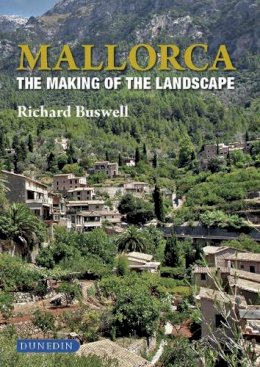Professor (Emeritus) Richard Buswell was Head of the School of Behavioural and Environmental Sciences at the University of Northumbria at Newcastle. A geographer, his main research has been in the historical and contemporary aspects of urban and regional development. He is a Fellow of the Royal Geographical Society and a member of the Institute of British Geographers. He is also the author of Mallorca and Tourism; History, Economy and Environment.
'Buswell's latest book has no peer in English....he draws on various epistemological perspectives to portray the landscape as a cultural artifact that is unique due to changing human settlement and exploitation, but also is a palimpsest bearing telltale signs of sequent occupancy never completely erased.' The AAG Review of Books 'The chapters on the historical landscape changes are both enjoyable and informative. The reader is taken on a tour which begins with ‘Prehistoric Mallorca’ (ch. 4), runs through the Roman and Muslim occupations (ch. 5 and 6) through to Medieval and early modern Mallorca (ch. 7 and 8). Three final chapters in this block (ch. 9-11) cover the last two centuries, focusing on the development of manufacturing (principally textiles), demographic changes, the decline of the large estates that had dominated for centuries, and of course, tourism. There is a careful consideration throughout on rural-urban landscape interactions and the development of Palma, reflecting its size and importance. These historical chapters that form the ‘core’ of the book are highly readable and will have wide appeal to a non-academic audience. This is in part down to the inclusion of many fascinating factual ‘gems’ that make the narrative come alive. These range from descriptions of land tenants’ rents during the sixteenth century (paid in a mixture of cream cheeses, goats and cash), to changes in dietary preferences between the Muslim and Christian occupations. I particularly enjoyed the author’s many asides (harking back to themes covered elsewhere) and style of probing behind the facts, although not all his questions are answered in much depth, which might frustrate some readers. There is much to commend the structuring and presentation of the book. The chronological layout of the chapters makes them easy to dip in and out of, whilst helpful summaries reinforce key points. The illustrations are generous and useful, taking the form of coloured maps, photographs and tables. I found the historical maps and old photographs particularly welcome - I wish there had been more of these but space doesn’t seem to have permitted this. The reference list is impressive and an excellent resource in itself.' Island Studies ‘The book is well illustrated and offers a panoply of archival photographs, contemporary images and sketch maps, but draws almost exclusively upon secondary research material. It is of direct interest to the teaching of Iberian geography at undergraduate level. This fascinating and informative book offers valuable insight into an island community that is little known beyond its Catalan and Castilian research roots.’ Geography

